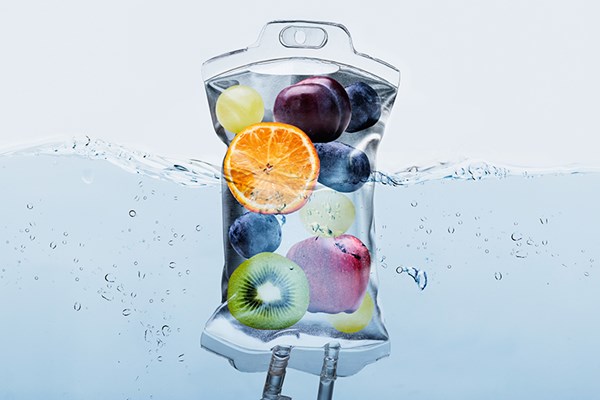Article
Chang P, Liao Y, Guan J, et al. Combined treatment with hydrocortisone, vitamin C, and thiamine for sepsis and septic shock (HYVCTTSSS): A randomized controlled clinical trial. Chest. 2020;S0012-3692(20)30552-30553.
OBJECTIVE
To evaluate the effect of hydrocortisone, vitamin C, and thiamine on mortality in patients with sepsis
BACKGROUND
There has been much interest in the treatment of sepsis with a “metabolic cocktail” of hydrocortisone, vitamin C, and thiamine since Marik et al. reported a 32% absolute reduction in mortality in a retrospective, single-center, before-after study in 2017. The interpretation of subsequent studies attempting to reproduce Marik’s results with prospective trials has been controversial. The CITRUS-ALI study, a randomized controlled trial published in 2019, investigated the use of vitamin C (only) in patients with sepsis and ARDS, and found no difference in their primary outcome, change in SOFA score. However, it found a significant reduction in 28-day mortality (16% ARR) as a secondary outcome. The VITAMINS trial, published in January of 2020, was the first randomized controlled trial to investigate hydrocortisone, vitamin C, and thiamine in sepsis and found no benefit to the combination. It has been criticized, however, for late administration of the treatment. Some have argued that the treatment must be administered early to provide benefit.
DESIGN
This was a single-blind randomized controlled trial conducted at a single center in Guangzhou, China.
POPULATION
Patients at least 18 years old with sepsis or septic shock as defined by the Society of Critical Care Medicine/European Society of Intensive Care Medicine’s sepsis-3 diagnostic criteria who had a procalcitonin value of at least 2 ng/mL on admission to the ICU.
Exclusion criteria included pregnancy, discontinuation of treatment by family, severe head injury, major bleeding, cardiogenic shock, advanced cancer, and a persistent source of infection that could not be drained or surgically removed.
INTERVENTION
IV hydrocortisone (50 mg every 6 hrs for 7 days or ICU discharge), vitamin C (1.5 g every 6 hrs for 4 days or until ICU discharge), and thiamine (200 mg every 12 hrs for 4 days or until discharge)
CONTROL
Saline in the same volume as that given to treatment group plus routine treatment
OUTCOMES
Primary
• 28-day all-cause mortality
Prespecified subgroup analyses
• Age < 65 years vs. ≥ 65 years
• APACHE II score < 25 vs. ≥ 25
• Duration of sepsis at enrollment ≤ 48 hrs vs. > 48 hrs
Secondary
• ICU length of stay
• Duration of vasopressors
• Duration of mechanical ventilation
• New AKI
• Change in SOFA score
• Procalcitonin clearance at 72 hours
• Lactate clearance at 72 hours
KEY RESULTS
This trial was stopped early after enrolling 80 patients (out of a planned 140) because a prespecified interim analysis found a high incidence of the adverse event of severe hypernatremia > 160 mmol/L in the treatment group (RR 4.33 p = 0.005) and no evidence of benefit in the primary outcome of mortality (RR 0.79, p = 0.47). Notably, 28 out of 40 patients in the control arm did not receive the saline placebo because the treating clinician felt the extra fluid compromised volume management. The only subgroup to show mortality difference was that treated within 48 hours (12.6% vs 47.6%, RR 0.29, p =0.02)
STRENGTHS
• Randomized controlled trial
LIMITATIONS
• Majority of control arm did not receive placebo
• Trial stopped early with low enrollment
• Single center trial
EM TAKE-AWAYS
There has been a great deal of debate around the treatment of septic patients with a metabolic cocktail of hydrocortisone, vitamin C, and thiamine. The literature has not yet shown a clear answer despite a number of high-profile studies. Unfortunately, this trial does not appear to add much to our understanding. It is very underpowered, and most of the control arm did not receive the placebo. The treatment group did experience a higher incidence of severe hypernatremia (for which the trial was stopped early), but this is a known effect of hydrocortisone. There may be a signal in the lower mortality among patients who were treated within 48 hours, which would fit with the criticism of the VITAMINS trial, but this is hypothesis generating at best. In summary, this negative trial was not powered to detect a mortality difference and leaves us with the same questions as before. Fortunately, a number of other RCTs are underway, and we will hopefully have some answers in the coming years.
References
- Marik P, Khangoora V, Rivera R, Hooper M, Catravas J. Hydrocortisone, Vitamin C, and Thiamine for the Treatment of Severe Sepsis and Septic Shock: A Retrospective Before-After Study. Chest. 2017;151(6):1229-1238.
- Fowler A, Truwit J, Hite R, et al. Effect of Vitamin C Infusion on Organ Failure and Biomarkers of Inflammation and Vascular Injury in Patients With Sepsis and Severe Acute Respiratory Failure: The CITRIS-ALI Randomized Clinical Trial. JAMA. 2019;322(13):1261-1270.
- Fujii T, Luethi N, Young P, et al. Effect of Vitamin C, Hydrocortisone, and Thiamine vs Hydrocortisone Alone on Time Alive and Free of Vasopressor Support Among Patients With Septic Shock. JAMA. 2020;323(5):423-431.




